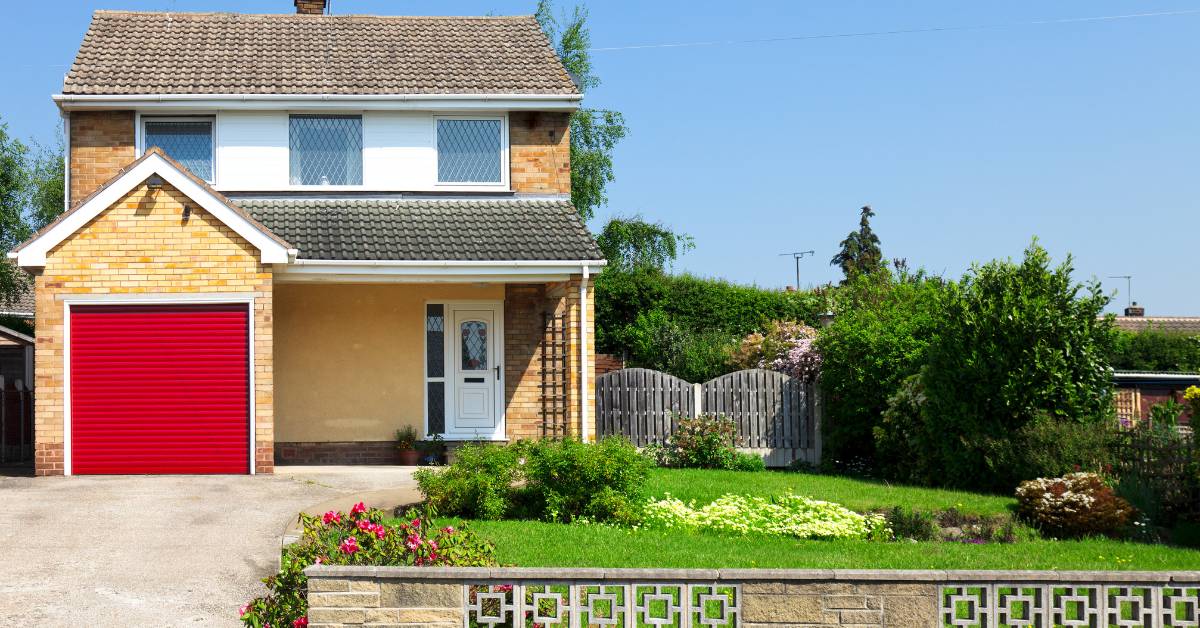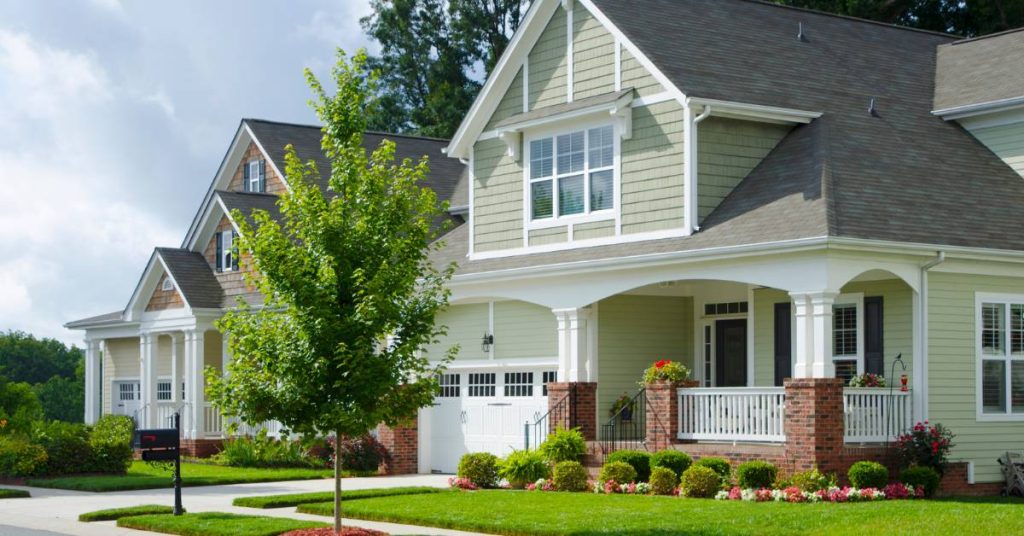While most folks think that they’re required to save up for a down payment, USDA loans allow no money down, true 100% financing.
But what the heck are USDA loans and how do they even work?
In this guide, we’ll teach you the ins and outs of how USDA loans work and help you make sense of it all so you can take full advantage of this amazing program!
What Is RD Loan?
The rural development loan is a home loan program backed by the United States Department of Agriculture (USDA). It gives low-income and moderate-income residents – who otherwise cannot qualify for conventional loans — the opportunity to have their own homes.
USDA loans do not require any down payment. It offers 100% mortgage financing so qualified borrowers can refinance, purchase, or construct their primary residence located in eligible rural areas.
The total loan amount is still borrowed from approved lenders. However, the USDA ensures the loan, which lessens the risk for lenders. As such, USDA borrowers can take advantage of lower mortgage fees and interest rates.
To become eligible for this program, you must satisfy the following loan requirements.
- Household income – Your household income must not exceed 115% of your area median income.
- Citizenship – Applicants must have a citizen status of U.S. citizen, U.S. non-citizen national, or qualified alien.
- Location – Eligible homes must be located in a rural area with a population of less than 35,000.
- Property size – The property must not be greater than 2,000 square feet and must not have a swimming pool.
- Use of Property – The home must serve as your primary residence and cannot be used for income-generating activities.
- DTI Ratio – Your debt-to-income ratio must not be higher than 50% and housing expenses should not exceed 29% of your monthly gross income.
Compared to conventional loans, the USDA is more flexible regarding loan requirements. Even if you do not meet all the requirements but show strength in certain areas, there is still a chance that you will be approved for an RD loan by the USDA.
What is the Name of a Common USDA Loan Program?
Most people are familiar with the term USDA loan. However, you may also encounter other terms that refer to or fall under the USDA home loan program, including:
- USDA Rural Development Loan
- Section 502 Guaranteed/Direct Loan Program
- Single Family Housing Guaranteed/Direct Loan Program
How Does a Rural Development Loan Work?

To understand how USDA loans work, you must become familiar with the two types of loans available to applicants: guaranteed and direct loans. While both loans offer 100% financing, they have some key differences.
What is a 502 Guaranteed Rural Housing Loan?
Section 502 Single Family Housing Guaranteed Loans are available for low-income to moderate-income households.
The loan is still funded by private lenders but is insured by the USDA if the borrower defaults. As such, USDA guaranteed loans are still subject to private lenders’ credit and income requirements.
For example, the USDA does not impose a minimum credit score for its applicants. However, most lenders will require a credit score of at least 620.
USDA guaranteed loans may have a 15- or 30-year fixed term with a rate that will be determined by the lender. These loans also come with additional fees, such as an upfront guarantee fee and annual premiums.
If you want to take advantage of changes in the mortgage market down the line, USDA also offers refinancing options. You can refinance your loan as long as you’re up-to-date on payments.
What is a 502 Direct Rural Housing Loan?
Section 502 Single Family Housing Direct Loans are for applicants from very low to low-income households. Here, the USDA acts as the lender and funds the loan amount.
The requirements to qualify for a USDA direct loan include:
- Adjusted household income must be 50-80% of the area median income.
- Applicants must currently be without a decent, safe, and sanitary dwelling.
- They are also unable to qualify for a loan from other sources.
Loan terms are available for up to 33 years for low-income households and 38 years for very low-income households.
Unlike USDA guaranteed loans, direct loans do not impose a size limit on a rural property. They also do not include mortgage insurance.
What are the Benefits of a USDA Loan?
USDA loans make homeownership easier to attain by removing significant barriers such as high down payments and low credit scores. It also has other benefits compared to FHA loans and other government-backed loans. Nonetheless, there are also some drawbacks to USDA loans that you should know about.
Here are the pros and cons of USDA loans.
Pros
- Zero down payment: Borrowers can qualify even without putting up a large down payment.
- No minimum credit scores: Those with low or no credit can qualify for a USDA loan.
- Lower mortgage costs: There is less risk with government-backed loans.
- Lower interest rates: It helps lower monthly mortgage payments.
- No maximum loan amounts: You can finance 100% of appraised home value plus upfront fees
- Streamlined refinancing options: Refinancing is relatively fast and does not require appraisals, inspections, or credit checks.
- Assumable loans: If you choose to sell your home, the buyer can assume the mortgage payment at the same interest rate.
Cons
- USDA loans are limited to eligible rural areas.
- Most lenders still require a minimum credit score of 620 to use the guaranteed underwriting system.
- Additional costs include closing costs, mortgage premiums, and an upfront guarantee fee.
- Most USDA loans come with a 30-year fixed rate.You can only borrow up to 115% of your area’s median income.
- You can only borrow up to 115% of your area’s median income.
- You must have made at least 12 consecutive payments on your USDA loan.
- Home must only be used as residence and not for earning money.
Section 502 Guaranteed Rural Housing Loan Program Credit Requirements
The USDA does not require a minimum credit score. However, since private lenders fund USDA guaranteed loans, they usually require a credit score of at least 620.
A credit score of 620 allows lenders to use the USDA Guaranteed Underwriting System (GUS), which helps streamline the entire process.
However, you may still qualify for a USDA loan if you do not have a credit score of 620 or higher. They may look at other factors to determine your creditworthiness – or your ability and willingness to take on the loan obligations.
To determine your ability and willingness to pay, they will check the following:
- Consistent income source/s
- Stable employment history
- List of assets
- Credit history for the last three years
- Debt-to-income ratio
- History of foreclosures, bankruptcies, late housing payments, USDA loans in the last three years
Does USDA Require Mortgage Insurance?
USDA loans do not require a down payment. However, because of the assumed risk of this type of loan, private lenders may require borrowers to pay additional costs.
Instead of the mortgage insurance that comes with conventional loans, USDA loans come with an upfront guarantee fee. Although it is meant to be paid upfront, borrowers may include the guarantee fee in their USDA loan.
USDA loans also come with annual fees of 0.35% of your remaining loan balance. You don’t have to pay a lump sum for this fee. Instead, you pay for it monthly as part of your mortgage payments.
What is the Current Interest Rate on a USDA Loan?
For USDA guaranteed loans, lenders will determine interest rates based on the current market rates at the time of loan approval or closing. This means that interest rates are always changing.
For current interest rates, get in touch with us today for an up-to-date rate quote.
Does My Home Qualify for a USDA Loan?

To qualify for a USDA loan, your home must be located in an eligible rural area. You can visit the USDA Income and Property Eligibility site to check.
Where Can I Buy a House with a USDA Loan?
Interested applicants should use the USDA Eligibility Map to find rural homes that qualify for a USDA loan. You can search for specific neighborhoods or ZIP codes, and the map will tell you whether that area is eligible.
Suppose you’re not yet set on a specific location. In that case, you can explore the map and look for regions with a white background, indicating that the area is eligible.
Frequently Asked Questions
What is the difference between a USDA loan and a regular loan?
Unlike USDA loans, conventional loans require a down payment. Some accept a down payment of as low as 3%, but most borrowers make a 20% down payment to avoid paying for private mortgage insurance. However, with a conventional loan, you do not have any geographical restrictions when choosing your home.
Are USDA loans cheaper?
USDA loans come out cheaper due to lower mortgage and interest rates. This is possible because the government insures the loan, which lowers the risk for private lenders. The goal of USDA loans is to make it possible for low to moderate-income households to buy their own homes despite not qualifying for conventional loans.
Should I get a USDA home loan?
A USDA loan may be one of the best paths to homeownership if your dream home has always been in a rural community or suburban neighborhood (sometimes, this is approved, too). Unlike conventional loans, you won’t need to pay a large sum for the down payment. It can also be more economical due to lower mortgage and interest rates.
While applying for a USDA loan might seem more accessible, keep in mind that this is still a significant financial commitment. As such, it’s important to know how USDA loans work. You need to know the different requirements, responsibilities, and restrictions that come with it. More importantly, this helps you determine whether or not you can qualify for a USDA loan.
Once you have all the information you need, you can adequately prepare your documents to help boost your chances of getting approved for a USDA loan.
Get 100% Financing on Your USDA Home Loan
Unlike the majority of mortgage options these days, USDA loans are the bedrock of 100% financing.
They can make the dream of homeownership a reality!
If you’re not sure if USDA is a good option for you or have additional questions, feel free to get in touch, or check your USDA eligibility for free in under 30 seconds!






